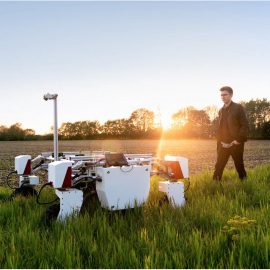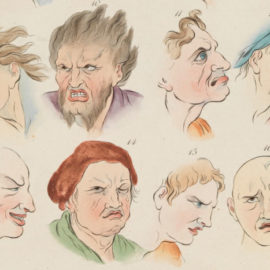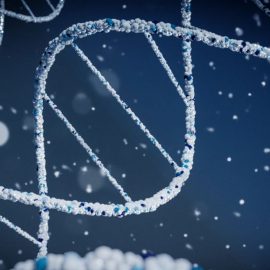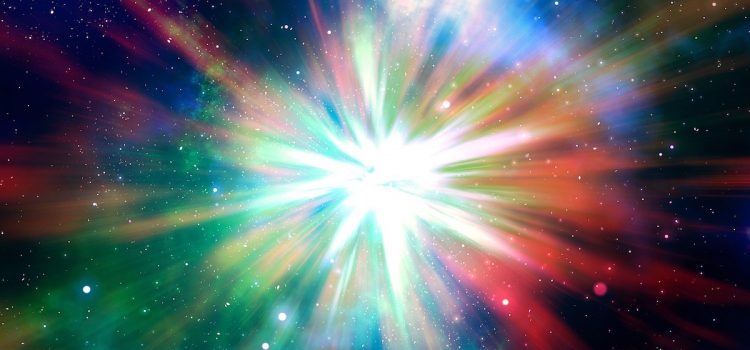
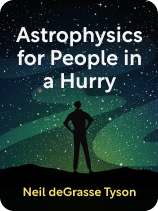
This article is an excerpt from the Shortform book guide to "Astrophysics for People in a Hurry" by Neil de Grasse Tyson. Shortform has the world's best summaries and analyses of books you should be reading.
Like this article? Sign up for a free trial here.
What was the universe like during the Big Bang? Why is there matter in the universe today and not just a void?
In his book Astrophysics for People in a Hurry, Neil deGrasse Tyson discusses the Big Bang and explains how matter and antimatter battled each other during the process. He uses simple terms to help anyone understand this fascinating moment in the history of the cosmos.
Keep reading to learn how the war between matter and antimatter ended up, resulting in the universe we have today.
Matter and Antimatter
At one point in the process of the Big Bang, the universe was boiling with subatomic particles—neutrinos, electrons, photons, and quarks. It was only under this extreme heat and pressure that quarks were even able to exist on their own. As the universe kept on expanding and cooling, all the quarks stuck together to form protons and neutrons, the building blocks of atoms. The quarks also formed into antiprotons and antineutrons that would annihilate the protons and neutrons, but Tyson writes that a slight imbalance in the early universe led to there being more matter than antimatter. By this point, a millionth of a second later, the universe had grown to the size of our solar system.
| Whatever Happened to Antimatter? Antimatter can be thought of as a mirror opposite to “normal” matter. For example, an electron is a subatomic particle with a negative electrical charge, whereas its antimatter counterpart, the positron, is an electron with a positive charge. When matter and antimatter particles collide, they annihilate each other, converting their mass into energy. One mission of the Chandra X-Ray Observatory and the Compton Gamma Ray Observatory was to search for traces of antimatter left over from the Big Bang. Those missions found evidence that there is little antimatter in the universe at all, but more recent observations have discovered a halo of antimatter surrounding our galaxy that may be partly responsible for the creation of dark matter, covered later in this guide. |
As the universe’s temperature dropped due to its expansion, so did the energy density needed to create more particles. The matter and antimatter already created continued to annihilate each other, but, because of the slightly higher amount of “normal” matter, that’s what was left when this period was over. The few remaining free quarks fused together, and the universe (now one second old) was several light-years across. Tyson points out that, if the amount of matter and antimatter had been perfectly balanced after the Big Bang, their mutual annihilation would have been complete, and the universe would be nothing but empty space.
(Shortform note: The most difficult aspect of the Big Bang to visualize is that it did not explode into empty space—the Big Bang’s expansion created space itself, stretching the universe in a process that still continues today. Therefore, there’s no “center” to the universe’s expansion. All points in space recede from every other point, carrying all the stars and galaxies with them. What drives this process remains unclear, but it now seems closely tied to the mysterious Dark Energy.)
Over the next two minutes, the first atoms condensed out of the primordial chaos. What formed were the two simplest elements—90% are hydrogen and 10% are helium. The universe’s temperature fell to a mere one billion degrees, and all the universe’s matter comprised a sea of hydrogen and helium gas so dense that any light it gave off was quickly reabsorbed. Tyson says that a universal dark age began that would last nearly 400,000 years.
(Shortform note: The early, dense universe was only able to produce hydrogen and helium because by the time those elements were able to form and stay together, the universe’s temperature and pressure dropped too low to fuse them into heavier elements. The rare instances of fusion between hydrogen and helium atoms that did occur produced unstable isotopes of beryllium that quickly broke apart back into hydrogen atoms.)

———End of Preview———
Like what you just read? Read the rest of the world's best book summary and analysis of Neil de Grasse Tyson's "Astrophysics for People in a Hurry" at Shortform.
Here's what you'll find in our full Astrophysics for People in a Hurry summary:
- Neil deGrasse Tyson's simple explanations of some of the mysteries of the cosmos
- Why everyone should understand where we fit in the universal scheme
- Why humans need to climb off their pedestals


